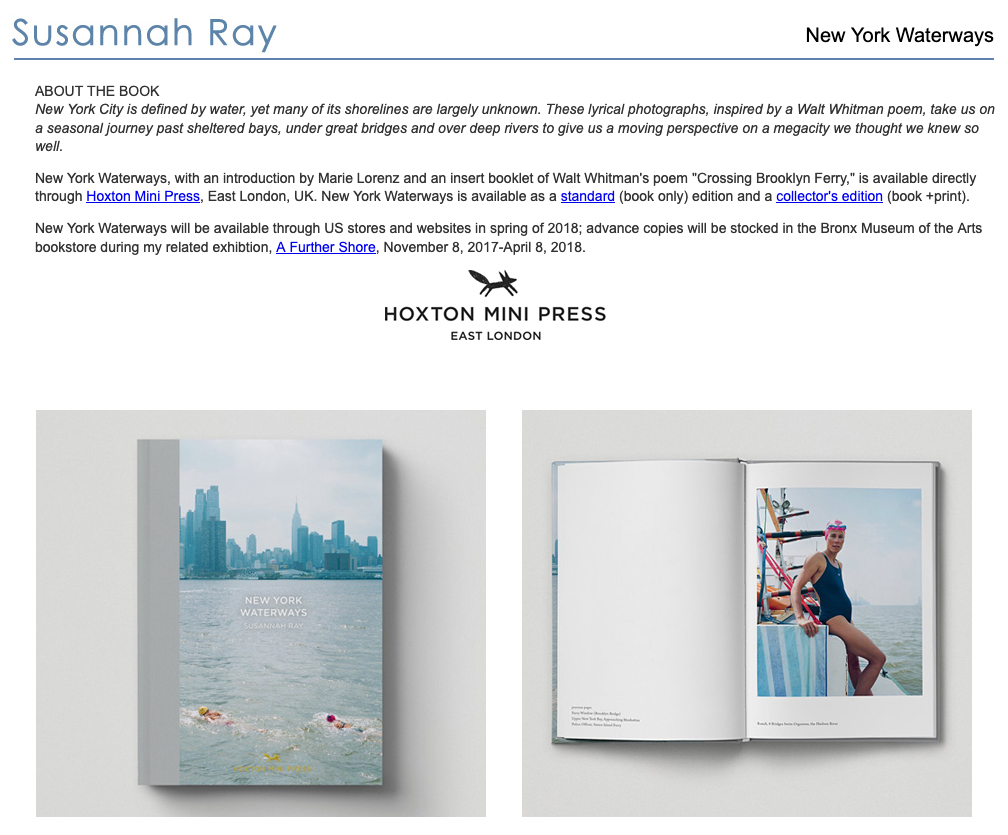Graphic Design Student Exhibition
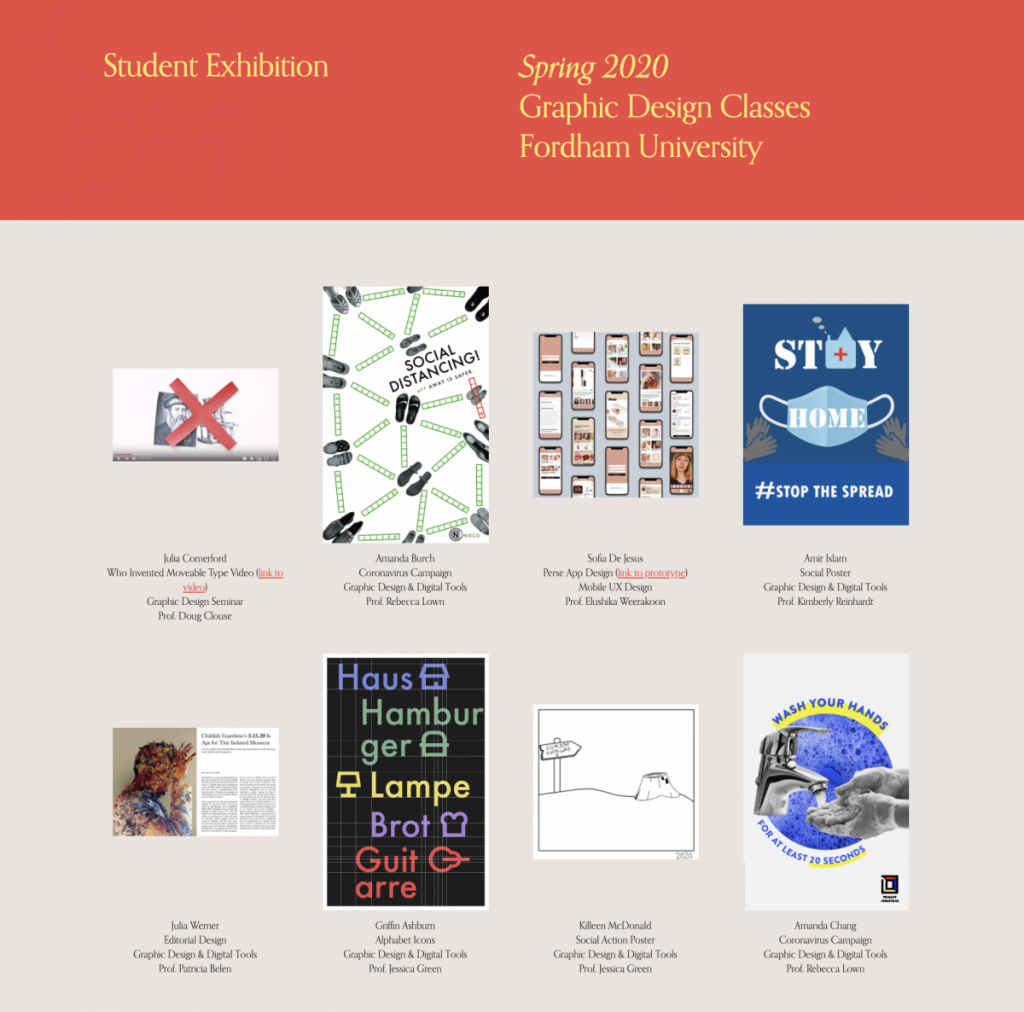
The Graphic Design instructors in Visual Arts are pleased to present the best student work from the Spring 2020 semester in an online exhibition.

The Graphic Design instructors in Visual Arts are pleased to present the best student work from the Spring 2020 semester in an online exhibition.
Student films made in Visual Arts classes Film Video I, Film Video II and Film Video Post Production. Some films deal with our current situation, others take us to imaginary worlds.
I am pleased to announce to you the completion of a project that is very dear to me. Clocking in at 438 pages with over 4500 images, Case Study Tokyo 2020 by the Gabelli School of Business is finally here!
Take one part working methodology from the influential 1972 book, Learning from Las Vegas: The Forgotten Symbolism of Architectural Form, combine with the megacity of Tokyo, add Fordham University Gabelli students, stir for ten days in Japan and what do you get? You get direct acquisition of knowledge through experience with a small team, realized in a hardback research volume focusing on branding, sensory marketing, architecture, design, photography, and urban planning.
Hearty congratulations to the intrepid researchers: Madison Burkart, Branden Cheung, Kaia Corthell, Alexa Cucchiara, Shauna Fortier, Alexander Gardner, Sekai Kaminski, Fionna Lui, Declan McCabe, Sraboni Paul, Anja Pelkola, Raimundo Sanchez, Amanda Scacalossi, Samantha Schwartz, Joseph Sellmeyer, Polina Yafizova, Kevin Zhang, Yiyun Zheng.
Preview the entirety of the book HERE. As well, you can order in softcover or two different hardcover formats. Enjoy!

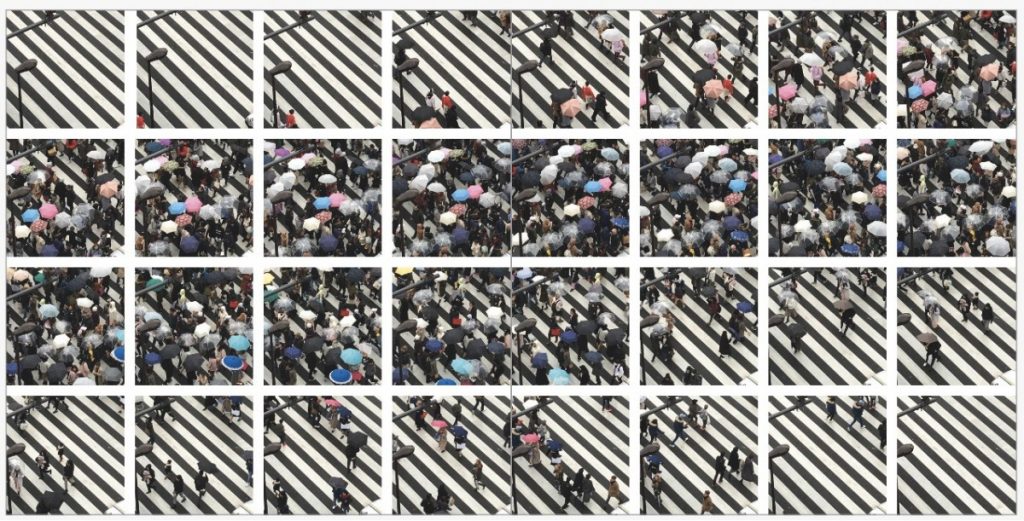
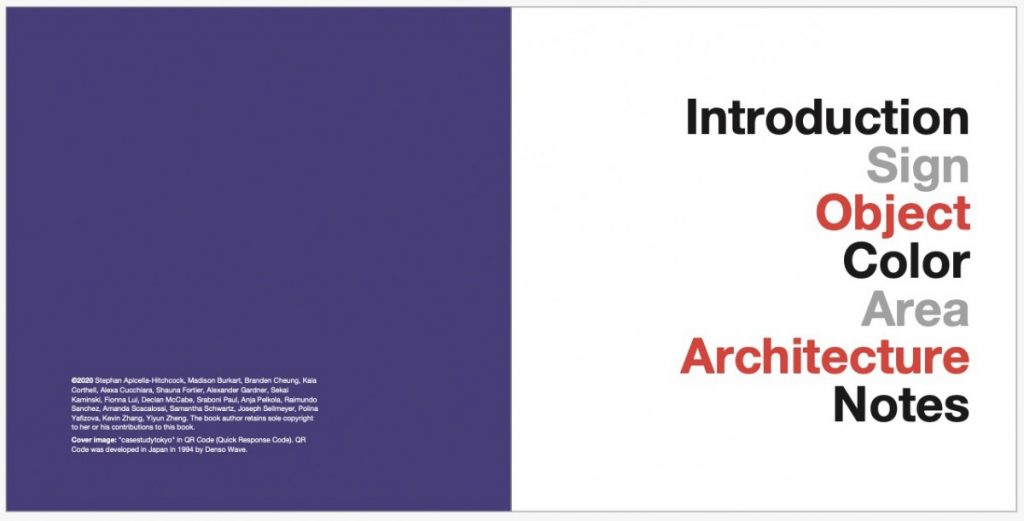

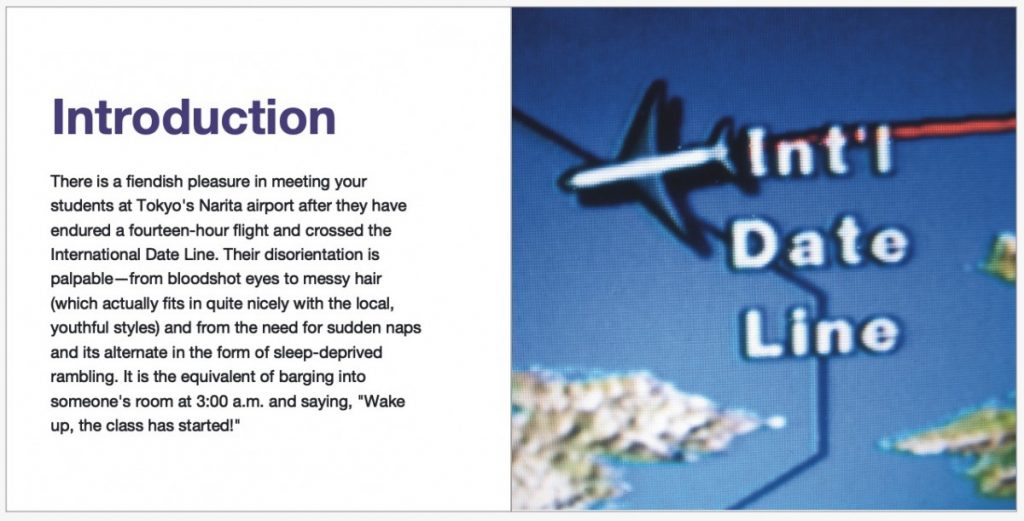
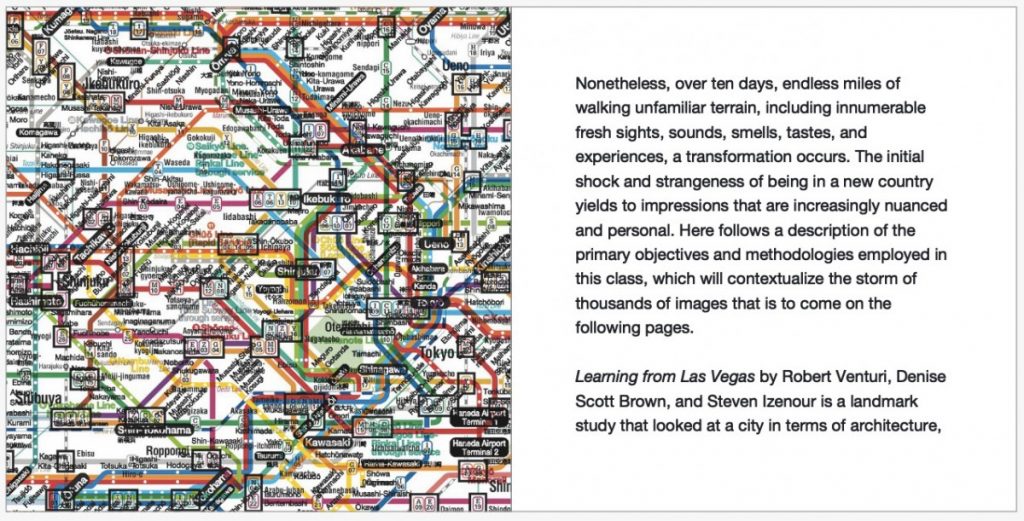
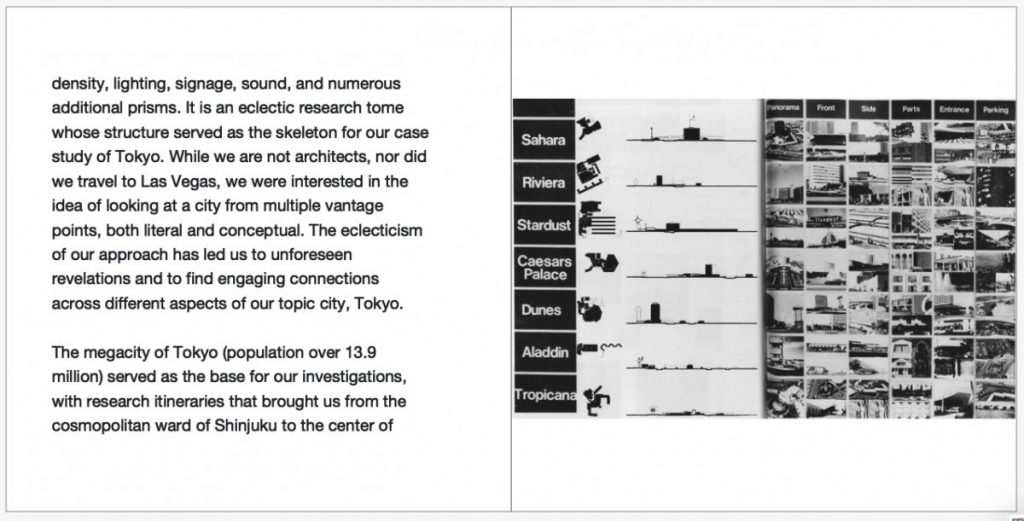
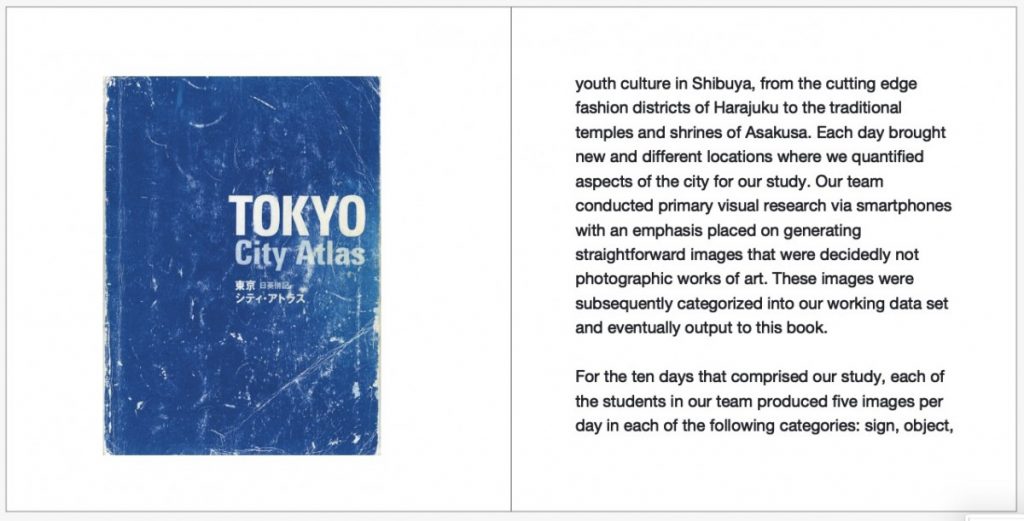
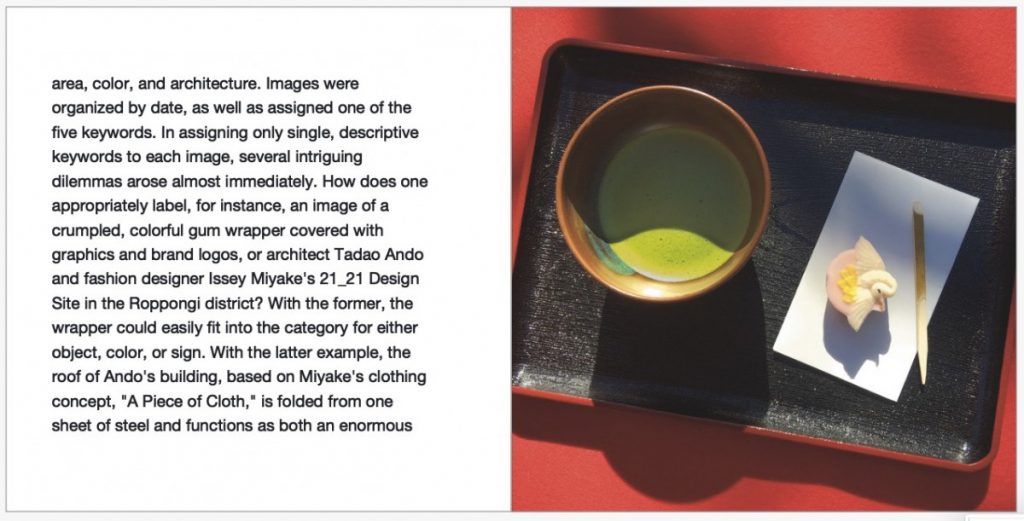
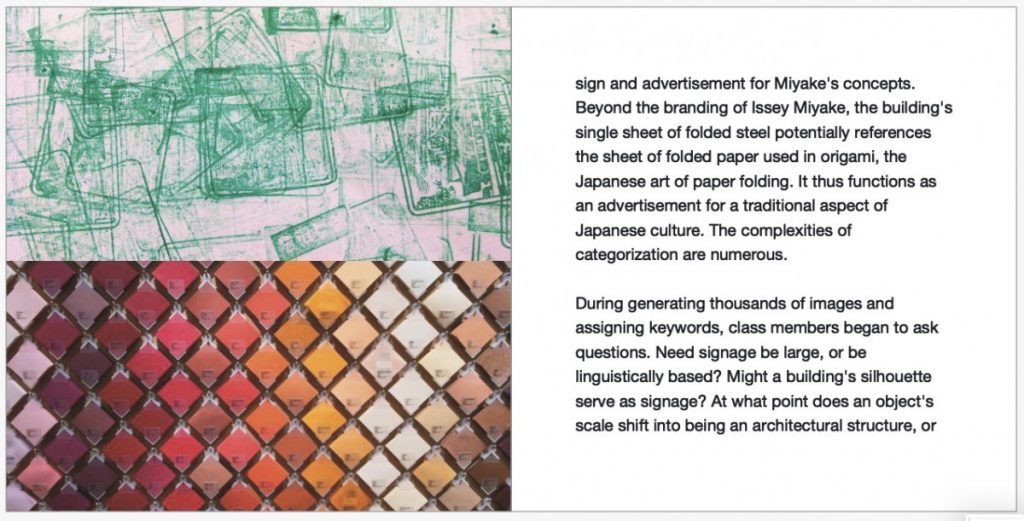
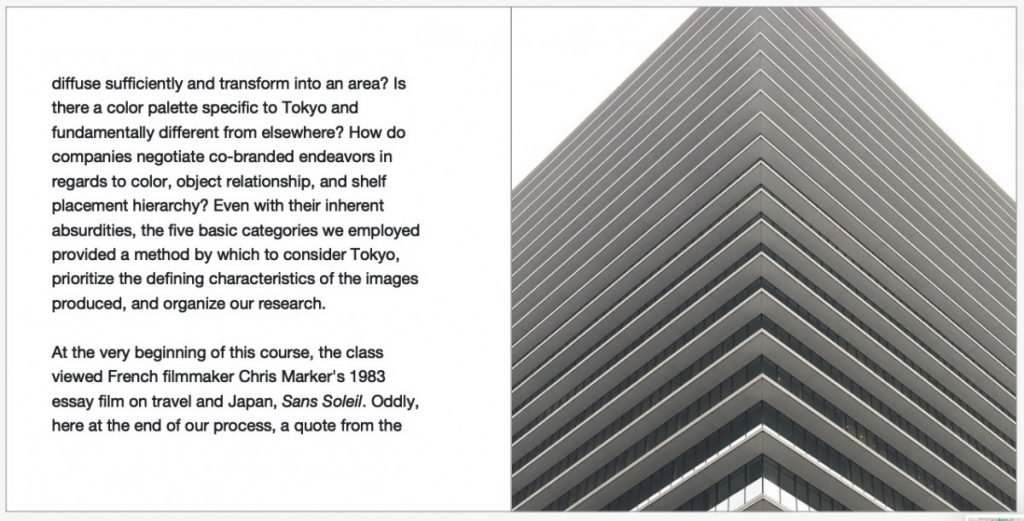
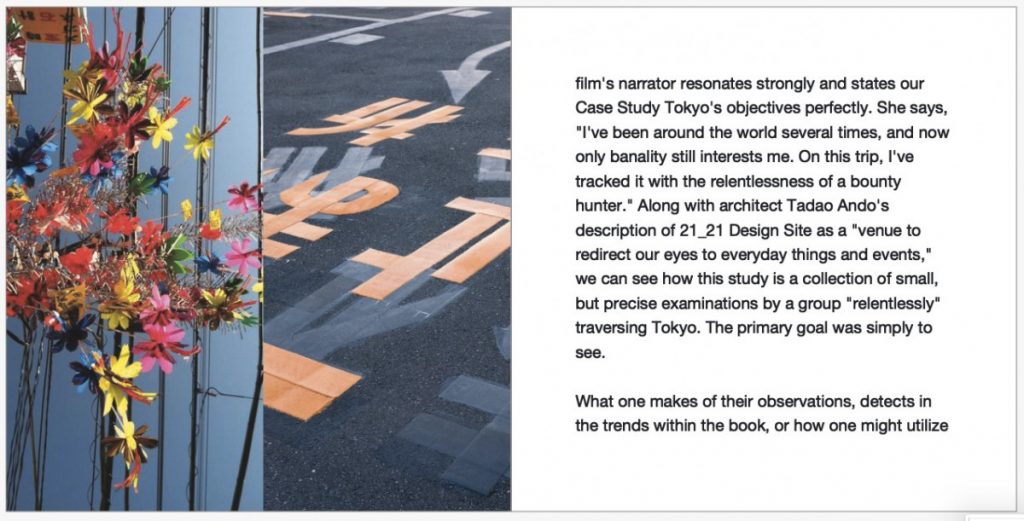
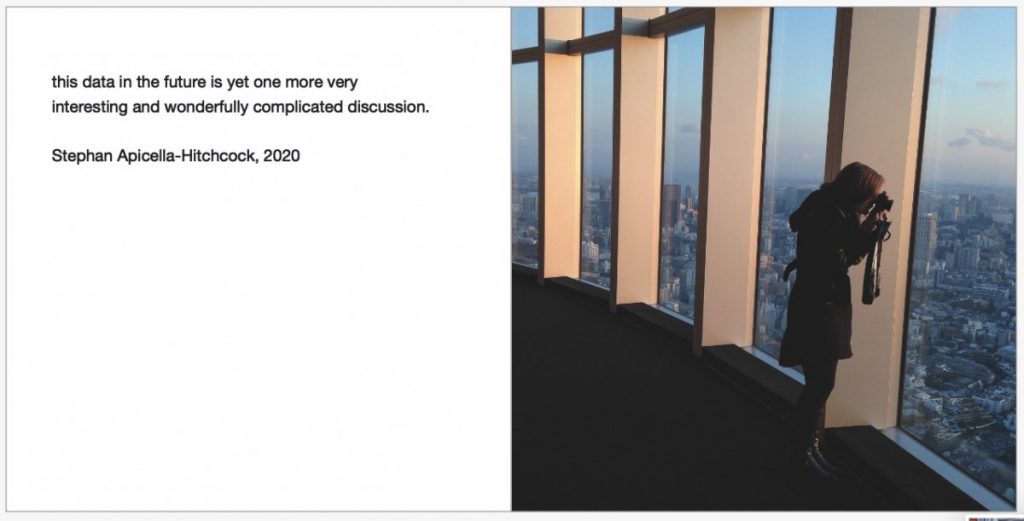
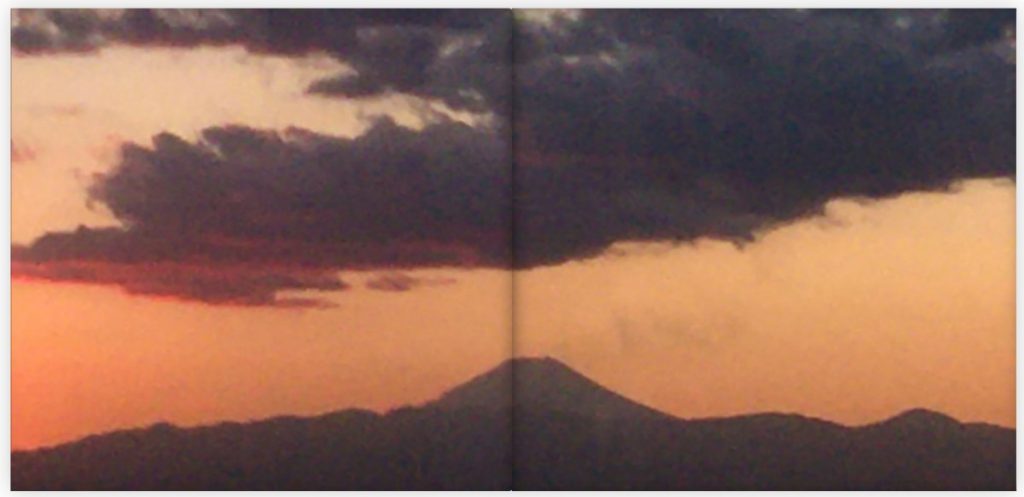


Call for Submissions
Journal of the Plague Year: An Archive of CoVid19
The Visual Arts Program has initiated a partnership between Fordham University and Arizona State University (as well as other schools across the country) to contribute to a remarkable public archive of materials related to how the CoVid19 pandemic is affecting our lives on a local level. You can submit images, text, videos, tweets, Facebook posts, Instagram or Snapchat memes, screenshots of the news, emails — anything that speaks to the moment. Here is a link to a fuller description of the project. Here is a link to the archive’s submissions page.
In the “Your name, as the contributor” field, add Fordham University after your name. This will allow us to search for your submission on the back end of the website and publish it more quickly. At some point in the not-too-distant future, there will be a Fordham Featured Collection that contains all Fordham submissions in one place.
In the “Description” field, add #FordhamUniversity.
Important: At the end of the form, check “Publish my contribution on the web.” If you don’t check this box, your submission will remain private and not appear on the website.
To see what other Fordham students have submitted so far, search “Fordham University” in the search bar at the top of the home page. Please contact Artist in Residence Casey Ruble at caseyruble@gmail.com if you have any questions or need help making your submission.
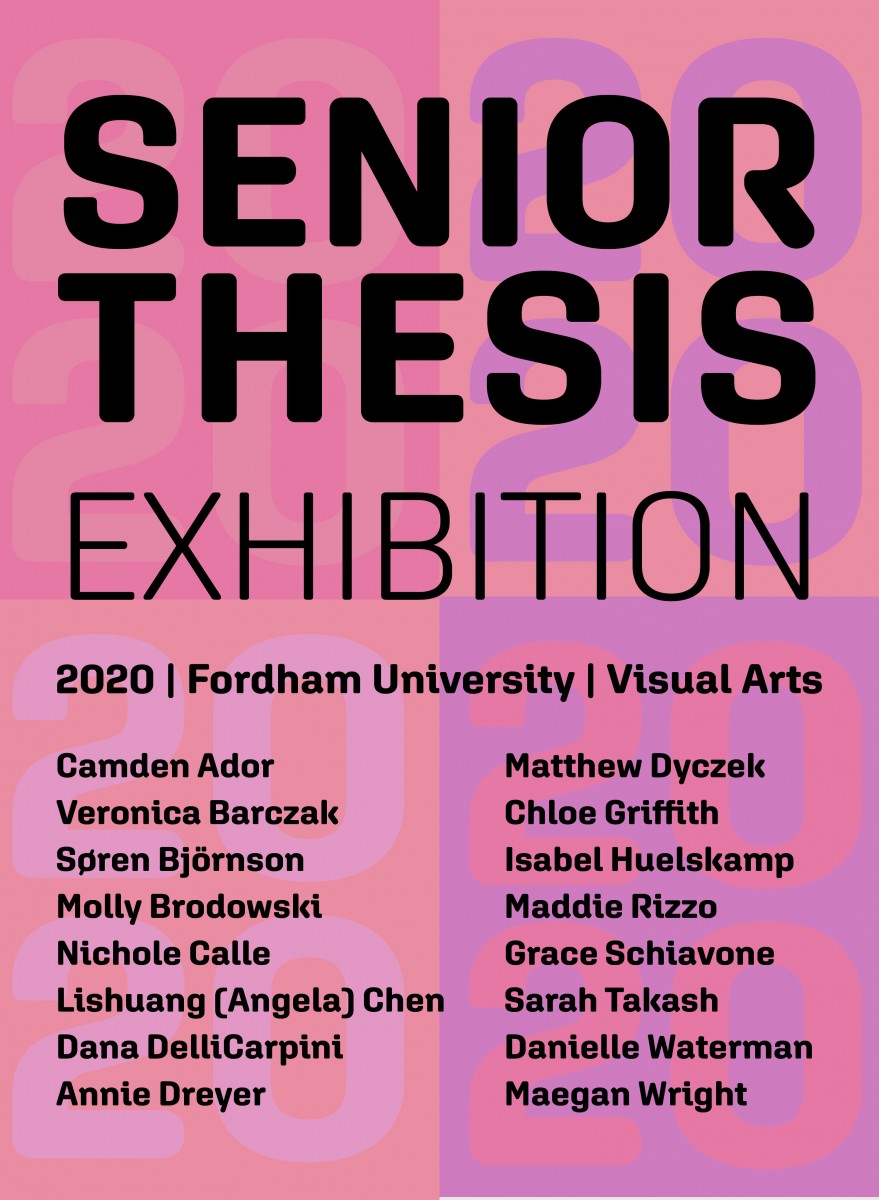
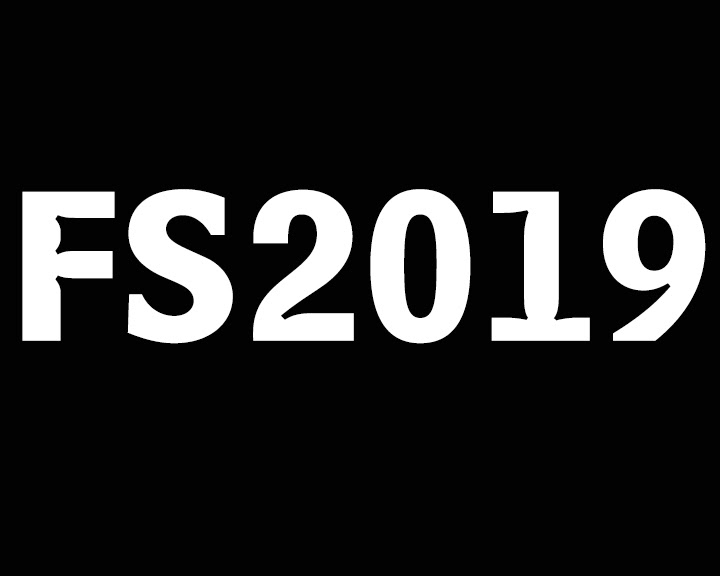
Featuring work by Abby Goldstein, Richard Kalina, Carleen Sheehan
November 25, 2019 – January 5, 2020
The Ildiko Butler Gallery
Fordham University at Lincoln Center MAP
113 West 60th Street at Columbus Avenue
New York, NY 10023
The galleries are open from 9 am to 9 pm every day except on university holidays
fordhamuniversitygalleries.com
The Department of Visual Arts at Fordham University is pleased to present the 2019 installment of the annual Faculty Spotlight Exhibition. Each year three members from the Department of Theater and Visual Art are asked to share a sampling of their production with the Fordham community. This year the Painting concentration is represented by both Richard Kalina and Carleen Sheehan with Abby Goldstein representing the Graphic Design concentration. Despite the differences in their mediums and approaches, their works generate a lively dialogue.
Abby Goldstein

Deep red by the side of the road, 2019, pigment and matte dispersion on paper, 44″ x 30″
My work is shaped by my surroundings; to what I see, to what I read, what I hear, and how I feel. I begin by setting visual guidelines, e.g.: medium, color, form, and size. I then develop a visual narrative using repetitive shapes, linear marks that transverse the picture plane. Improvisation is integral to my process. Each mark informs the next defining the composition as it develops. I move between representation and abstraction; my objective is to suggest an imaginary landscape that is based on environment, observation, and memory.
Richard Kalina

Prospect 9, 2014, 16″x16″, collage, acrylic, flashe on linen
The works in this show are nine out of the twelve paintings in the Prospect series. I began work on them in the early summer of 2014. I had been looking at and thinking about Le Corbusier and visionary, Machine Age architecture. A question arose when I drew and painted these works: were they plans or elevations, diagrams (with rooms and balconies) or fully fleshed abstract images? The paintings are built from a toolkit of components: panels, bars, circles, and complex linear connectors. They are constructed from painted and torn rice paper layered and collaged on linen. There is also a governing, game-like logic — a way of putting a rational order on sets of intuitive processes. In this case, the number of the internal panels matches the number of the color bars (and no color bar repeats) and the circles always come in two of each color. This sounds rather serious, but the paintings are meant to be playful and while they are at it, musical in a baroquely contrapuntal way. Importantly for me, they opened the door to my investigations of abstraction over the last five years.
Carleen Sheehan

detail, Cove (2019), acrylic, gouache, mixed media on canvas, 48″ x 34″
A central focus of CARLEEN SHEEHAN’s work is the intensity of contemporary space, with its accelerated temporal shifts and collaged eccentricities. Recent imagery celebrates the spectacle of the natural, depicting small fragments of ephemera: the movement and density of water, shifts in light, color and atmosphere. The work relies on the inter-connectedness of visual forms and processes across categories and disciplines, and on descriptive qualities inherent to different levels of information.
For further information on the exhibition please contact: Stephan Apicella-Hitchcock
For the Visual Arts Department Blog: click here
For the Visual Arts Department Website: click here
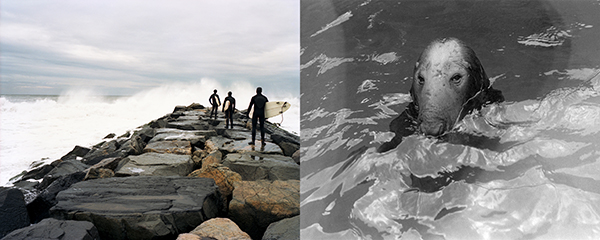
Curator: Stephan Apicella-Hitchcock
The Lipani Gallery
July 10–October 10, 2019
Reception: TBD
Fordham University at Lincoln Center MAP
113 West 60th Street at Columbus Avenue
New York, NY 10023
fordhamuniversitygalleries.com
Fordham University is proud to present a new two-person exhibition of photographs in our Lipani Gallery by Susannah Ray and Kota Sake. Upon immediate inspection, the images by these two photographers could not be any more different in terms of content, style, process, or presentation. However, upon closer inspection, a certain resonance begins to emerge between the two bodies of work.
Both evidence a clear dedication to exploring and documenting their respective topics over an extended period of time. As well, each selection of photographs examines how we utilize our free time, pursue our pleasures, and engage with our passions and pastimes. On the most direct level, both bodies of work clearly have something to do with water; however, none of these possible interpretations quite nails their connection down solidly. This ambiguity should serve as an invitation to come to visit the gallery and see the individual bodies of work, as well as an enticement to ponder their linkages.
This exhibition could be seen as a classic summer gallery show aimed towards pleasing the crowds—in this case, with surfers and animals. Nevertheless, beneath the initial hook of breezy, summer reading are numerous aspects of a more nuanced and provocative nature.
website
Susannah Ray
Right Coast
In fall of 2004, following my growing obsession with maritime weather models, cold-water wax, and 7mm neoprene mittens, I began documenting surfing in New York City. My life as I knew it had succumbed to my constant urge to surf, and it became clear to me that my photography would suffer from neglect if I did not begin to document the new passion that occupied most of my waking thoughts and many of my dreaming ones.
The project title, Right Coast, is a nickname for the East Coast that not only indicates its location on the continental US, but also asserts an underdog’s dreams of superiority. Surfing on the right coast, particularly in New York City’s Rockaway Beach, lacks most of the lifestyle and allure of West Coast surfing. Yet making up for the dearth of good weather, consistent waves, and beautiful surf spots is a community that has a surfeit of heart, dedication, and soul. Or in a word, aloha.
In the fall of 2012, less than a year after I concluded this series, Hurricane Sandy devastated Rockaway Beach, forever altering the landscape and our relationship to the sea. These photographs have become a testament to halcyon days, to a way of life lost, and to a life regained.
Kota Sake
Messengers
Chances are that at any given moment millions of digital pictures of unbearably cute animals are being uploaded to the Internet for viewing and pleasurable consumption. Second probably only to adorable baby pictures, cute animal pictures no doubt pervade our consciousness as we go about surfing the Internet, paying bills, and generating various status updates.
So, in looking at Kota Sake‘s traditional, gelatin silver photographs of animals one must ask why they seem so unfamiliar, resolutely not cute, and at times tragically strange. Considering that we are constantly exposed to such creatures online, in calendars, and in physical form at the zoo, it is an admirable achievement to transform something seemingly familiar into something otherworldly and mysterious.
Suspended in the netherworld of zoo tanks, these creatures glide, drift, sink, and loiter, isolated and mostly indifferent to our presence. There are no Technicolor creatures singing cheerful or cautionary songs for our education and pleasure. Theses creatures exist purely outside of our realm of understanding.
Images: Susannah Ray, On the Jetty, 2005 (L), Kota Sake, Messengers, 2019 (R)
For further information on the exhibition please contact:
Stephan Apicella-Hitchcock
